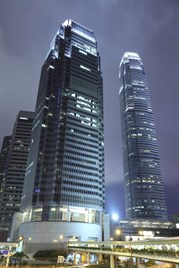 Read the peer reviews for this feature.
Read the peer reviews for this feature.
Download the graphs for this feature.
"Railway companies and city regions have conflicting objectives. It’s a major constraint,” says Richard Coburn, head of economic development at consultant Atkins.
“Railways want people to move around quickly. Get them in… get them on a train. Local stakeholders want people to stay and use new facilities, generate employment, improve communities. Rail has a singular task - it doesn’t need to deliver more than a railway.”
The railway owns large tracts of lucrative development land, often close to urban centres. It is wary about selling this land off, as future passenger growth means more sidings will be needed to stable more trains. What is useless wasteland today may not remain so, and must therefore be protected. But what remains is unsightly blight - acres of buddleia and rusting rubbish, often juxtaposed with smart new town centre developments.
“British Rail got quite good at selling off surplus land. And Railtrack was exceptionally good at it. By the time I got involved there wasn’t a huge amount of surplus land left,” says David Biggs, managing director, property, at Network Rail.
“We have in the region of 200 development ideas which range from the rebuilding of Twickenham station to a larger scheme using the car park at Manchester Victoria,” he adds.
“There are great examples of collaborative development,” counters Warwick Lowe, a former station manager who is now rail planning director at Atkins.
“King’s Cross, obviously. For the new Birmingham station, the railway chaired bodies with local stakeholders and worked out who was getting the value. The city gets a landmark structure that allows regeneration, so the city put some money in.”
Coburn adds: “On a smaller scale, Wolverhampton has ambitious plans to upgrade the station, reinvigorating a wider area. It’s a horrible station. It puts people off, especially women at night. Creating a new sense of place will increase the throughput of passengers.”
Case study: Argent and King’s Cross
The massive development of land around King’s Cross is the obvious place to start. Here we are talking in billions of pounds, which means it is far from typical of rail-related property developments.
When developer Argent moved in, most of the land was in one big parcel. And through London & Continental Railways, the Government retains a stake in it.
This is one of the biggest and best development sites in central London, on a scale like nothing else on the railway. Yet Argent had no expertise in railways - its job was to bring in big-money tenants such as the London headquarters of Google.
“Our relationship with the railway is excellent,” says Argent partner André Gibbs. But pressed harder, he admits: “It probably wasn’t the warmest at the beginning. I’m sure there was some suspicion about what we were trying to do, and it wanted to draw lines in the sand. Although Network Rail shared our vision for the area, it didn’t have an economic interest in it. We both knew we needed each other and although it wasn’t trusting at the beginning, it is now.”
Argent put £160 million into the site, and then used deals with the earliest occupiers to spend £330m on infrastructure. It is the developer’s biggest ever project. New roads had to be built. But although this is old railway land alongside two landmark London termini, the development fundamentally has little to do with the railway.
Says Gibbs: “In terms of how King’s Cross interacts with the public realm, we have helped make the new concourse which binds the station together and even more of a success. We also own the Great Northern Hotel, which helps to create a better station.
“Network Rail speak with pride about what they’ve achieved, but they also speak with pride about their role in the wider area. They have been a big part of that - they’ve got a halo effect from it.”
The whole area has benefited. British Transport Police points to a drop in crime, as the character of a formerly run-down quarter has changed. Prostitution and drug offences are substantially down.
“We didn’t set out to reduce crime on the railway,” points out Gibbs. “We did set out to make the area safe and clean. You don’t look at these things in the silos of the ownership boundaries. Improvements beyond our boundary improve our values, reduce our risk.”
Work to plan this new piece of London started in 2000. What was then known as the Channel Tunnel Rail Link was completed in 2007, so the following year was the earliest that commercial developers could move in. Construction will take until at least 2020, making it a 20-year project.
“We didn’t know what the market might be,” says Gibbs. “The site is next to one of the busiest railway stations in the UK. It’s a short walk to a train to Paris or Brussels and it’s in central London.
“So we needed a planning application with flexibility. The roads we put down will last for centuries, but we needed to be able to swing blocks from housing to commercial to retail as the market changed. We hadn’t imagined having a university in the middle of the site - we didn’t know the student housing block would be the first building occupied.











